#medgar evers
Photo

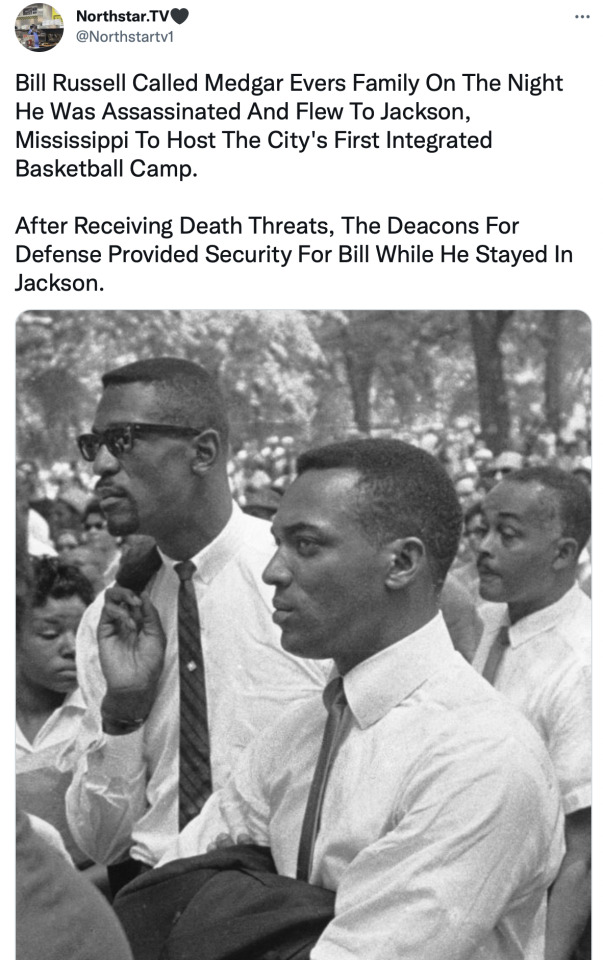


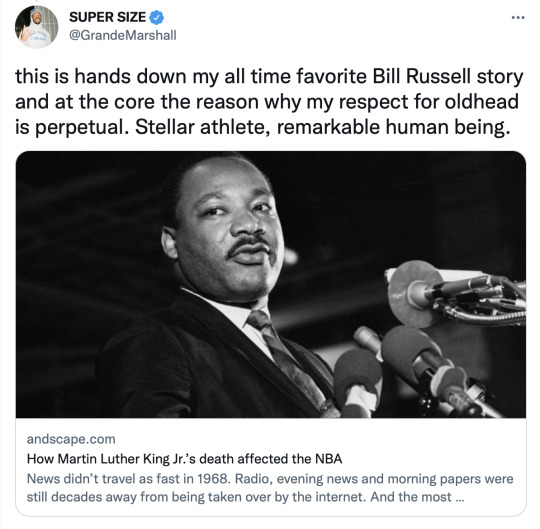
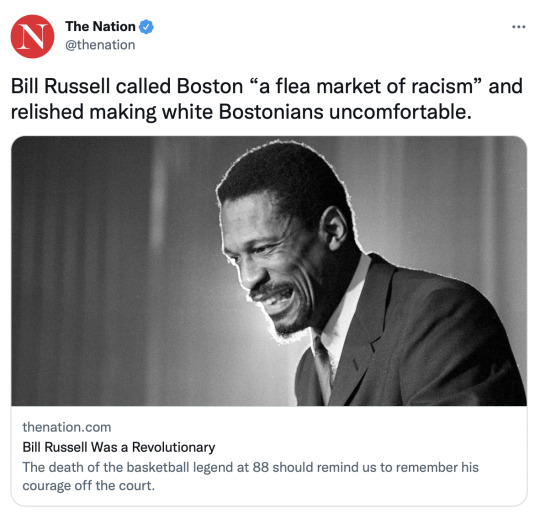
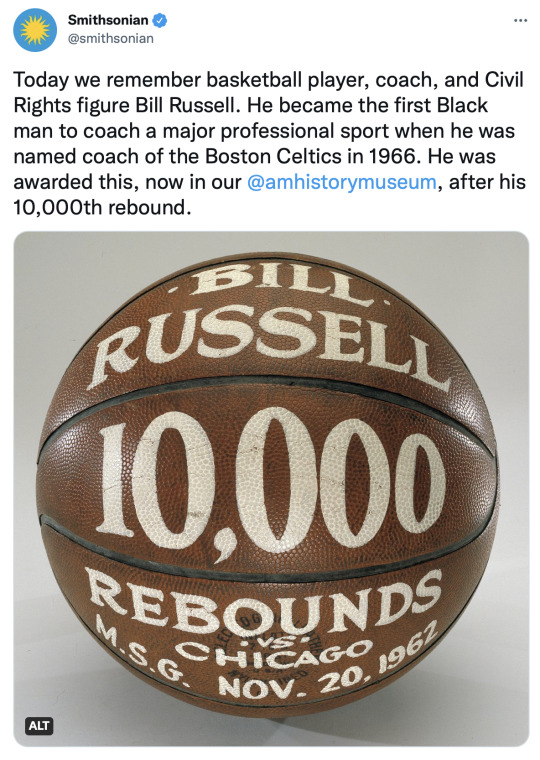

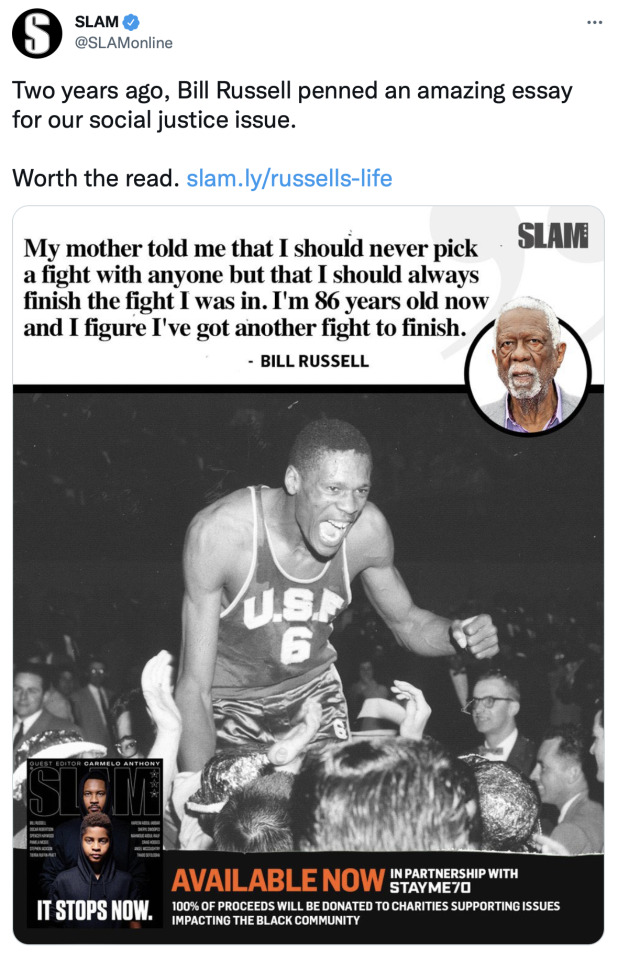
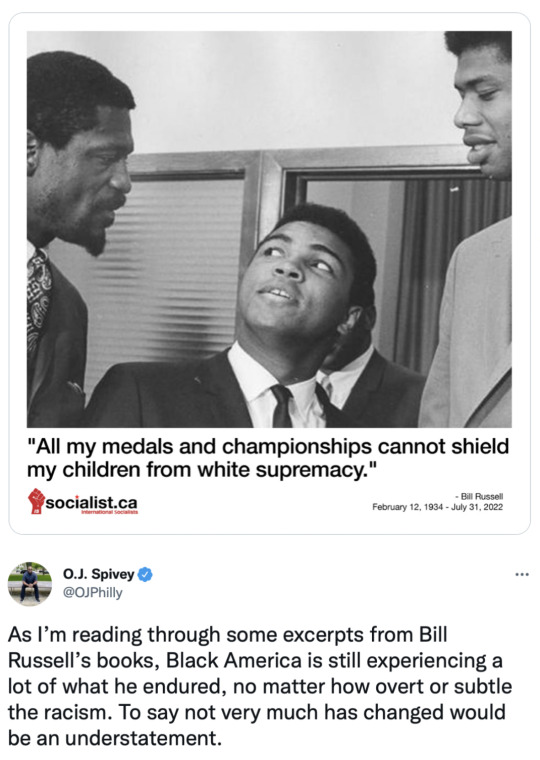
Y’all know damn well ain’t nothing changed here for Black Americans. It evolves with the times. Modern-day lynchings and all. It’s not just overt racism like back then, but covert racism to boot. Bill called it white supremacy. I call it white terrorism. Ain’t nothing supreme about it.
Anyone involved in the Civil Rights movement for the right reasons had an FBI file on them. I wonder how deep his was smh.
Rest easy, Bill Russell (1934-2022) 🕊❤️
#bill russell#medgar evers#muhammad ali#martin luther king jr#I already know he's gonna be one of those people I forget has passed on#and think they're still here#death is surreal#on another note you already know I'm gon find that FBI file 🧐
8K notes
·
View notes
Text

Medger Evers .. But did you know he was also a college football star at Alcorn State, where he was a teammate of his brother, Charles? He was. “Medgar played halfback and I played center,” Charles Evers, 94, said recently during an interview at his WMPR radio office in west Jackson.
#medgar evers#black tumblr#black history#black literature#black community#black excellence#civil rights#black history is american history#blackexcellence365#college education#alcorn state#college football#black lives matter#equal#equal rights#football player#american history
299 notes
·
View notes
Text

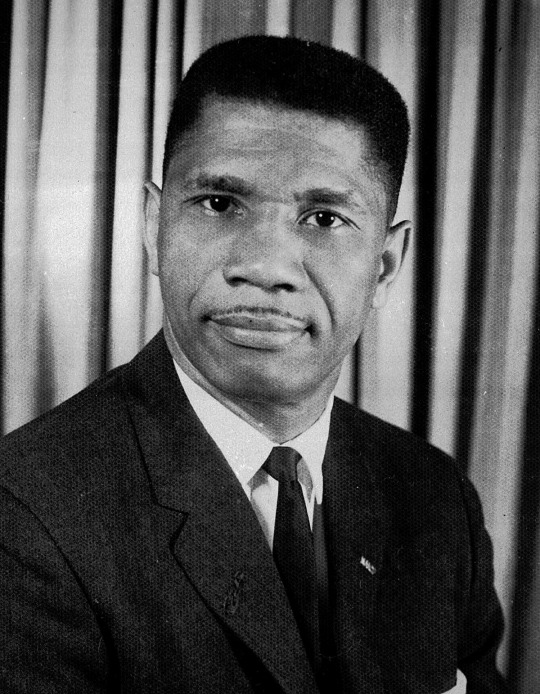
Today In History
Long after the Mississippi justice system gave up on the murder prosecution of Medgar Evers, Myrlie Evers kept the case alive.
When Myrlie Evers was told in 1989 that new information in her late husband’s decades-old murder case was unlikely to move the gears of justice, she did not react in anger.
Instead, she listened carefully as Mississippi prosecutor Bobby DeLaughter explained that the state couldn’t find any of the evidence from a past prosecution. Then, Myrlie calmly asked that his team “Just try.“
Faced with the overwhelming odds of a case with few surviving jurors, and a public that had long since seemed to move on from the tragedy, others might have backed down. Instead, Myrlie Evers fought to have the murder case reopened—a battle she had waged for 30 years.
On February 5, 1994, white supremacist Byron De La Beckwith faced a more racially diverse jury, in the third trial for the murder of Medgar Evers. When the guilty verdict was read, Myrlie Evers-Williams wept.
Afterwards, reported the Los Angeles Times, she jumped for joy, then looked up to the sky, saying “Medgar, I’ve gone the last mile of the way.”
Joy Ann-Reid @joyannreid MSNBC national correspondent and best-selling author, chronicles the lives of civil rights icons Medgar and Myrlie Evers in her new book: “Medgar and Myrlie: Medgar Evers and the Love Story That Awakened America.”
CARTER™️ Magazine
#carter magazine#carter#historyandhiphop365#wherehistoryandhiphopmeet#history#cartermagazine#today in history#staywoke#blackhistory#blackhistorymonth#medgar evers#myrile Evers
75 notes
·
View notes
Text
274 notes
·
View notes
Text
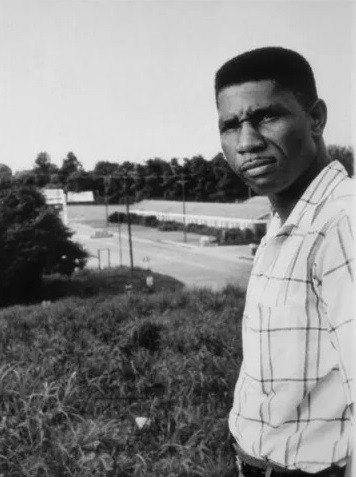
NAACP Field Secretary Medgar Evers poses for a portrait, 1960, Jackson, Mississippi.
22 notes
·
View notes
Text
#medgar evers#black history#civil rights movement#uploads#videos#books#erika alexander#black books#joy Ann Reid
11 notes
·
View notes
Text
My first blog post is available on my Patreon ❤️
The post as y’all can see it about the Rosenwald schools and their importance to our community. I’ll be uploading some more tonight and of course tomorrow ❤️🙌🏾
#black etsy#black spiritualist#hoodoo tumblr#black spiritualism#hoodoo#african american spirituality#african american culture#black spirituality#black tarot readers#rootwork tumblr#black history#black historians#booker t Washington#Julius Rosenwald#preserve black history#black is beautiful#black tumblr#maya angelou#John Lewis#medgar evers#civil rights movement#the reconstruction era#segregation
9 notes
·
View notes
Text
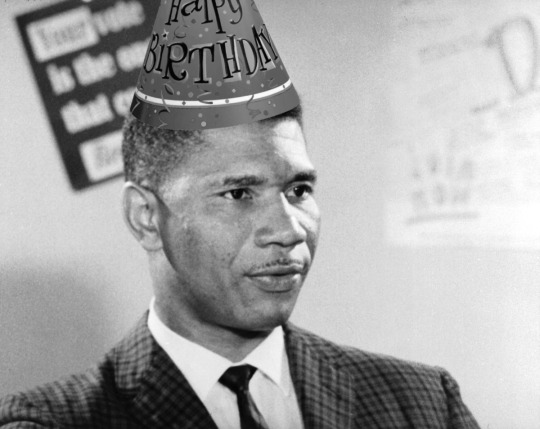
Happy birtdhay, Medgar Evers! (July 2, 1925)
A World War II veteran and civil rights campaigner, Medgar Evers was born in Decatur, Mississippi at the height of Jim Crow. As a child, he was forced to walk 12 miles each day to attend school in the segregated schooling system of Mississippi. After returning home from the war, Evers received a college education and became active in the Civil Rights movement, moving to the Black community of Mound Bayou and becoming president of the Regional Council of Negro Leadership. He was also associated with the NAACP, becoming its first field secretary in Mississippi in 1954. As the Civil Rights movement made gains, such as the Supreme Court-mandated abolition of segregated schooling, Evers faced escalating threats and hostility from white supremacists, culminating in his assassination in 1963 by Klansman Byron De La Beckwith. Evers' murderer was initially let free by a hung all-white jury, but was finally convicted in 1994.
265 notes
·
View notes
Note
What do you think of the song 'Try That in a Small Town' by Jason Aldean?
Jason Aldean's song says if you try those "big city" things out here in small towns, there's gonna be swift justice delivered by the local populace. He means this as a good thing and at first the song sounds like it's about being anti-crime, but soon it moves to vigilante justice, which is a terrifying prospect for minority populations.
Yesterday a national monument to Emmett Till was dedicated. Fourteen-year-old Emmett was abducted, beaten, and lynched after he was accused of whistling at a white woman in small town Mississippi.
Emmett Till is far from the only one who met a violent death at the hands of small-town justice: Matthew Shepherd, Brandon Teena, Medgar Evers, James Byrd, Ahmaud Arbery, and the list goes on
————————————————————-
Small towns have a strong sense of community and togetherness, you can also find this in big cities. Big cities have people of color, allies, and queer folks, and so do small towns. Illegal drugs, domestic violence, and people being harassed and attacked for being "different" happens in both the big city and the small town. Good people live in small towns and in the big city. Urban and rural areas are in a symbiotic relationship, we need each other.
I view this song as yet one more way of saying we're a divided nation and need to view each other with suspicion. I believe we can celebrate the good people where we live without running down folks from other places. We don't have to view people who live in places different from us as enemies who have to be treated harshly.
24 notes
·
View notes
Text
"As long as God gives me strength to work and try to make things real for my children, I'm going to work for it - even if it means making the ultimate sacrifice."
Medgar Evers - American Civil Rights Activist - (1925-1963)
#quoteoftheday#quotes#quotesoftheday#quotes of tumblr#life quotes#inspirational#life quote#medgar evers#ghosts of mississippi#black history month#black history month 365#black history#black power#black history 365#civil rights#civil rights movement#daily quotes#god
5 notes
·
View notes
Text

TODAY’S FROZEN MOMENT -
60th Anniversary - June 28th, 1963 - This was the cover of LIFE Magazine, and was arguably their most powerful cover ever. Here was a gut-wrenching photo of Myrlie Evers, the widow of slain civill rights leader Medgar Evers, comforting their weeping son Darrell at the funeral.
This photo and its being placed on the cover of the nation’s then-most prominent media location - the cover of LIFE, added power to the growing outrage which was growing throughout the nation.
Evers' martyrdom, and this image sitting on coffee tables all over America, helped compel Congress to move on a comprehensive civil rights bill. The bill, pushed in this moment by President Kennedy, would be signed into law the following year, by President Johnson - Kennedy not living to see that moment.
Though Evers’ murderer, Byron De La Beckwith, was twice tried, he was acquitted with hung juries.
Myrlie Evers fought endlessly to keep her husband’s murder case active, writing a book that opened with the line: Somewhere in Mississippi lives the man who murdered my husband.”
Three decades alter, her persistence paid off when the case got reopened and Beckwith was found guilty of first-degree murder.
Medgar Evers’ legacy is about the right to vote, and the push to register voters, the constant push to keep the right to vote protected, and to not let the progress made slip away.
As far as America has progressed, there are still forces that see the stoking of, and pandering to, the worst side of some Americans, makes for moneymaking ratings on rightwing media networks, and for votes for Republicans. This is sadly a constant struggle that has to be, also constantly, waged.
Hopefully, there is a sense of that Myrlie Evers persistence where this fight is concerned.
The photographer who took this shot was John Loengard
[h/t Mary Elaine LeBey]
#Life Magazine#history#racism#Mary Elaine LeBey#Myrlie Evers#Medgar Evers#civil rights#voting rights#the 1960s
13 notes
·
View notes
Text


#medgar evers#black tumblr#black history#black literature#black excellence#black community#civil rights#black history is american history#american history#equal rights#history#black history month#black history matters
161 notes
·
View notes
Text

18 notes
·
View notes
Text

52 notes
·
View notes
Text
From Medgar & Myrlie by Joy Reid:
"It was a bitter irony. Slaveholders had raped enslaved Black women so routinely that they invented new racial categories to characterize the resulting offspring: mulatto, quadroon, and octaroon—based on the percentage of “white” the person was. Many of these children were put up for sale regardless of being their “owner’s” child and were often the subject of confusion and wonder at how a “Negro” could look so white. Slavery in Mississippi and throughout the South had been characterized by forced breeding and relentless sexual violence. Yet the sons and grandsons of the men who built that system, and who fought to defend it during the Civil War, built their postbellum Southern culture around the constant fear that Black men were fixated on raping white women. And even though the South’s defeat at the war’s end failed to stop the raping of Black women, these sons and grandsons of enslavers invented a palliative for their fears: lynching."
2 notes
·
View notes
Text


📷 source: New York Post
2 notes
·
View notes